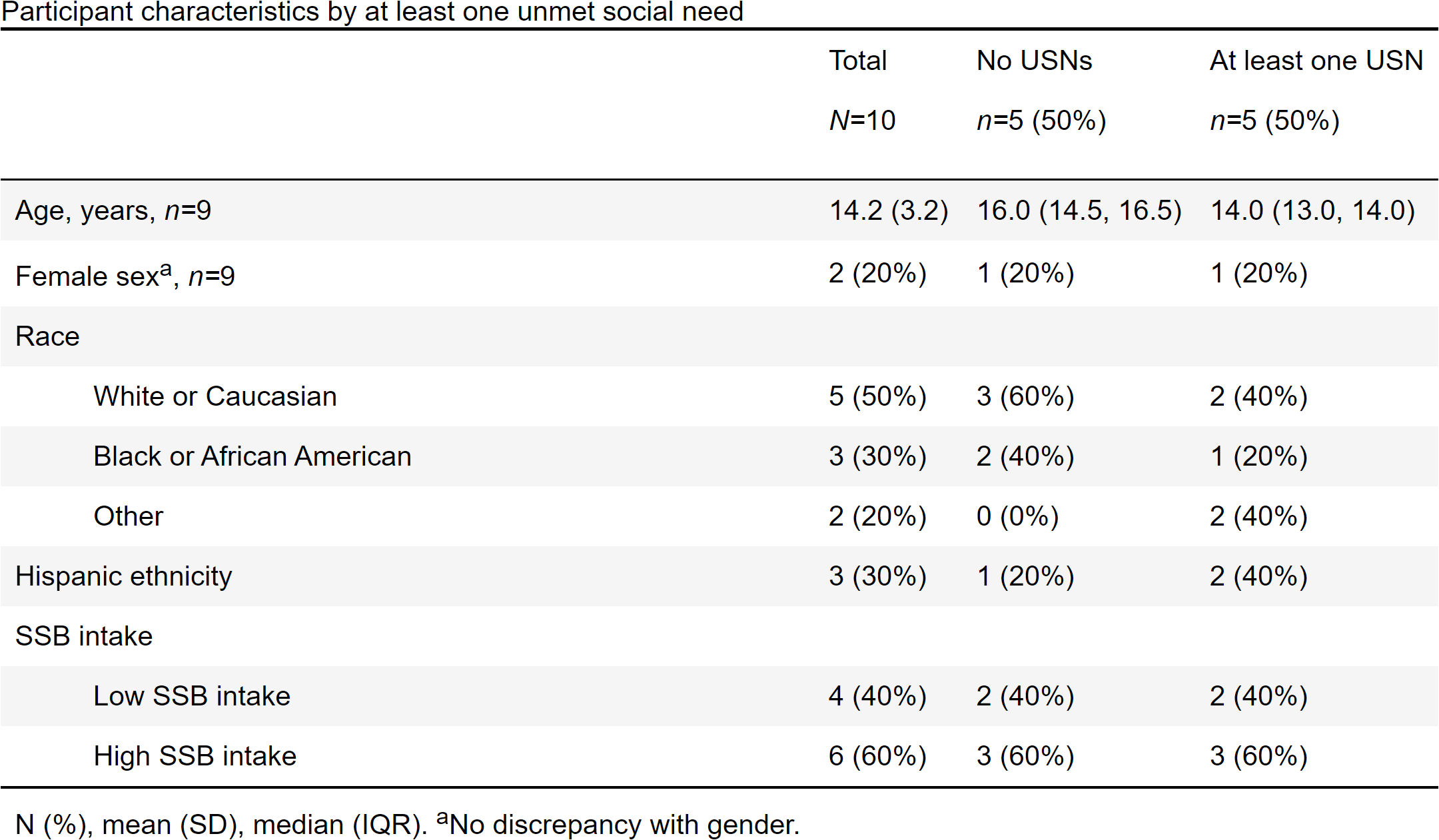Hypertension
Hypertension 2
30 - Unmet Social Needs and Sugar-Sweetened Beverage Intake in Youth with Hypertension
Sunday, April 30, 2023
3:30 PM - 6:00 PM ET
Poster Number: 30
Publication Number: 30.322
Publication Number: 30.322
Beatrice S. Gar, Wake Forest School of Medicine of Wake Forest Baptist Medical Center, Greensboro, NC, United States; Malia Colden, Wake Forest School of Medicine of Wake Forest Baptist Medical Center, Wake Forest, NC, United States; Taniya S. Ballard, Wake Forest School of Medicine of Wake Forest Baptist Medical Center, Kennesaw, GA, United States; Claire J. Hoffman, Wake Forest School of Medicine of Wake Forest Baptist Medical Center, Northampton, PA, United States; Andrew M.. South, Wake Forest School of Medicine of Wake Forest Baptist Medical Center, Winston Salem, NC, United States; Kristina H. Lewis, Wake Forest School of Medicine of Wake Forest Baptist Medical Center, Winston-Salem, NC, United States

Beatrice S. Gar (she/her/hers)
Undergraduate Student Researcher
Wake Forest School of Medicine of Wake Forest Baptist Medical Center
Greensboro, North Carolina, United States
Presenting Author(s)
Background: Excessive adiposity as occurs in obesity is the most common risk factor for developing hypertension over a person’s life course. Sugar-sweetened beverages (SSB) are associated with a higher risk for obesity. Preliminary studies have shown possible associations between unmet social needs and the consumption of unhealthy foods and beverages in adults and youth. Despite this, the role that unmet social needs play in SSB intake in youth with hypertension has not been investigated.
Objective: Investigate the association between unmet social needs and SSB intake in youth with hypertension.
Design/Methods: This is an ongoing prospective, cross-sectional study of youth with hypertension disorders recruited from a subspecialty hypertension clinic. Inclusion criteria were youth who were diagnosed with hypertension, received care for at least one month, and were 8-18 years old. New patients who presented for their first clinic visit and those who were not English-speaking were excluded, as were those with complex heart disease, those who were pregnant, or those who received nutrition through a gastrostomy tube or hyperalimentation. SSB intake and unmet social needs were measured using validated questionnaires administered to patients in the clinic. We are recruiting 42 participants based on sample size calculations. For this interim analysis, we used Fisher exact test to compare proportions between the high SSB intake group (≥2/day) and the unmet social needs group (≥1 unmet social need).
Results: Of the 10/42 participants enrolled to date, the median age was 14.2, 80% were male, 50% were White or Caucasian, and 30% were Black or African American. Sixty percent of participants had high SSB intake and 50% had at least one unmet social need. The was no difference in high SSB intake between those with at least one unmet social need and those with no unmet social needs (50% vs. 50%, p=1.0).
Conclusion(s): Our results indicate that there is a high prevalence of unmet social needs in youth with hypertension. Immediate next steps are to continue patient recruitment until we have reached our goal of 42. We hope to further investigate how neighborhood characteristics and income influence unmet social needs relative to SSB intake.

